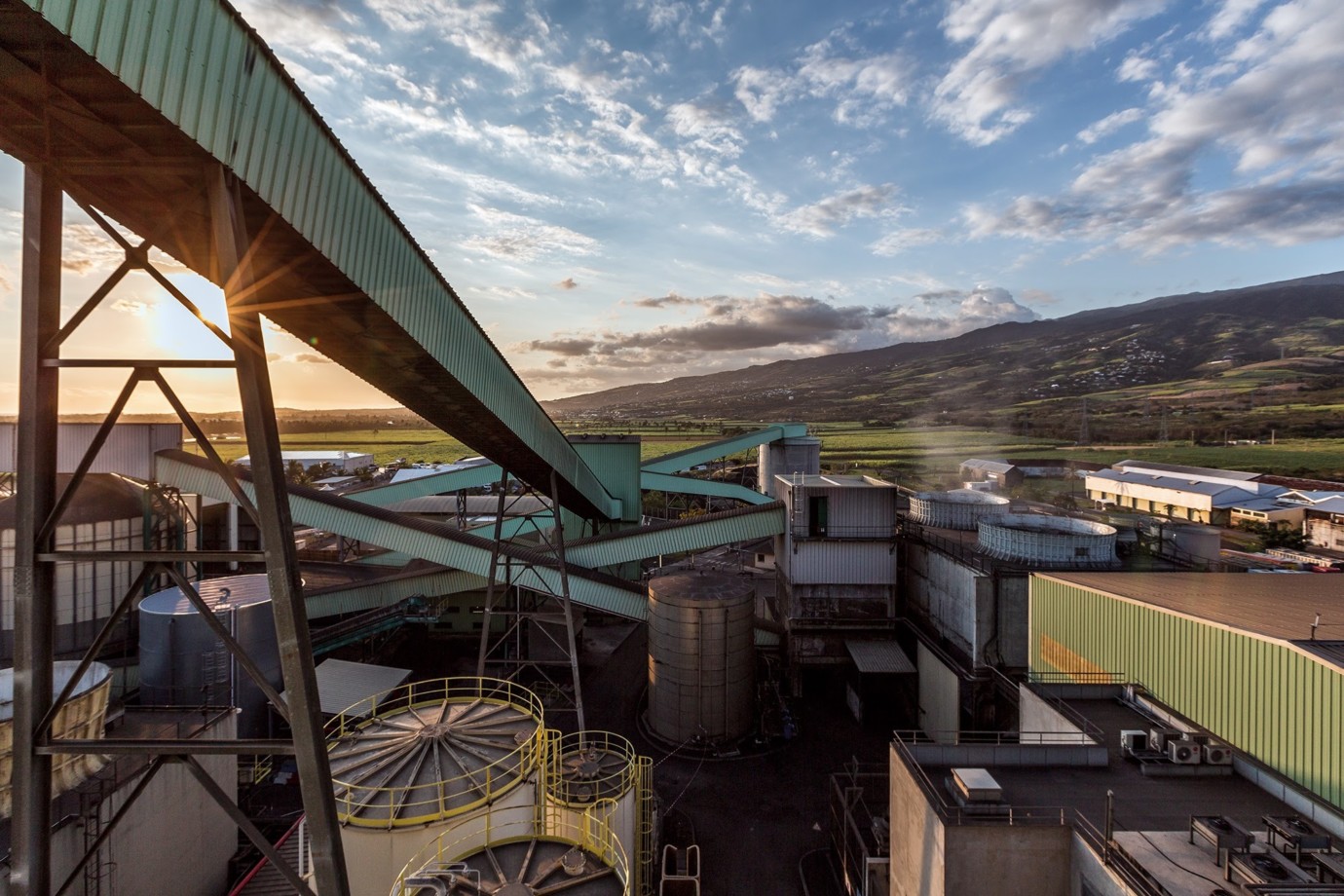Réunion’s goal is to have an all-renewable energy mix by 2030. Can you describe the current energy mix ?
Philippe Boyer: The island’s energy mix currently comprises 30% renewable energy (from local bagasse, hydroelectric, photovoltaic and wind power, as well as biogas) and 70% fossil energy (from coal, heavy fuel oil and diesel). Bagasse makes up 7% of this mix.
How long has Albioma been present on Réunion, and with what projects ?
Philippe Boyer: The Group began operating on Réunion Island in 1992, with a project for a bagasse-coal cogeneration plant capable of switching fuel without shutting down production. The Albioma Bois Rouge plant was the first in the world to adopt this model. Today, the Group’s thermal and photovoltaic plants and combustion turbine account for a little over 47% of Réunion’s total energy production.
Can you tell us how the Le Gol plant currently operates ?
Philippe Boyer: The Le Gol plant is a cogeneration unit that consumes fuel to simultaneously produce both electricity and steam. Currently, depending on the season, this fuel may be either bagasse from the neighbouring sugar refinery (during approximately half the year), or coal (outside the sugar harvest and at weekends). This plant accounts for 22% of Réunion’s total energy output, and is able to supply more than 82,000 households.
"Converting the Le Gol plant will increase the share of renewables in Réunion's energy mix by almost 20%."

Plant Manager, Albioma Le Gol
What environmental impacts can we expect from converting Le Gol to all-biomass operation ?
Philippe Boyer: With all coal consumption replaced by renewable energy, converting the Le Gol plant will increase the share of renewables in the energy mix by almost 20%. The conversion will also cut the island’s greenhouse gas emissions by more than 40%.
How will the converted plant operate ?
Philippe Boyer: The conversion work primarily concerns the biomass storage and handling facilities. In future, the plant will operate with bagasse during the sugar harvest, and with wood pellets or local biomass (as a substitute for coal) for the rest of the year. Priority will be given to locally-sourced biomass, supplemented initially by wood pellets imported from the Southeastern United States, Europe or Asia. Looking ahead, we are working with the national forestry office (ONF) to develop the local fuelwood industry, which will create new jobs and allow us to reduce the share of imported biomass.
Will the island’s electricity supply be maintained without interruption during the works?
Philippe Boyer: Yes, of course! Particular attention has been paid to continuity of supply, especially during the series of shutdowns required at the plant’s power generating units. The works schedule takes into account the availability of all power generating facilities on the island, ensuring that enough electricity is produced by the units still in service at Le Gol, as well as off-site facilities. This is why the Bois-Rouge and Le Gol conversion projects are not being carried out concurrently. Lastly, there will also be emergency generators on immediate standby, in case of an unforeseen malfunction during the works.
Background
Philippe Boyer joined Albioma in 1992. Originally hired as a fitter, he went on to hold positions as Fitting department manager, Chief Maintenance Officer and, from January 2009, Plant Manager for the Albioma Bois Rouge facility in eastern Réunion. In 2012, he relocated to the south of the island to manage Albioma’s Le Gol plant.

